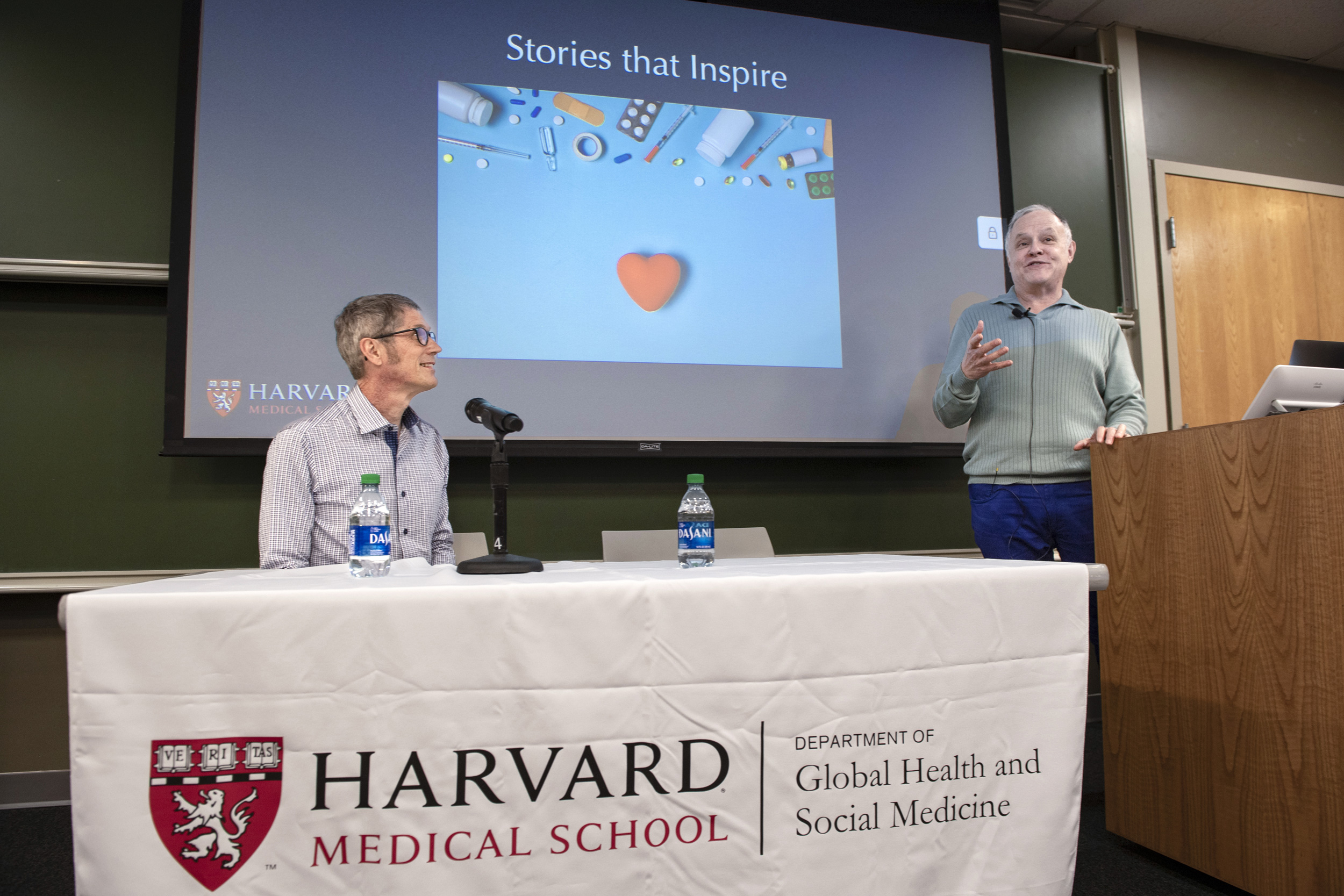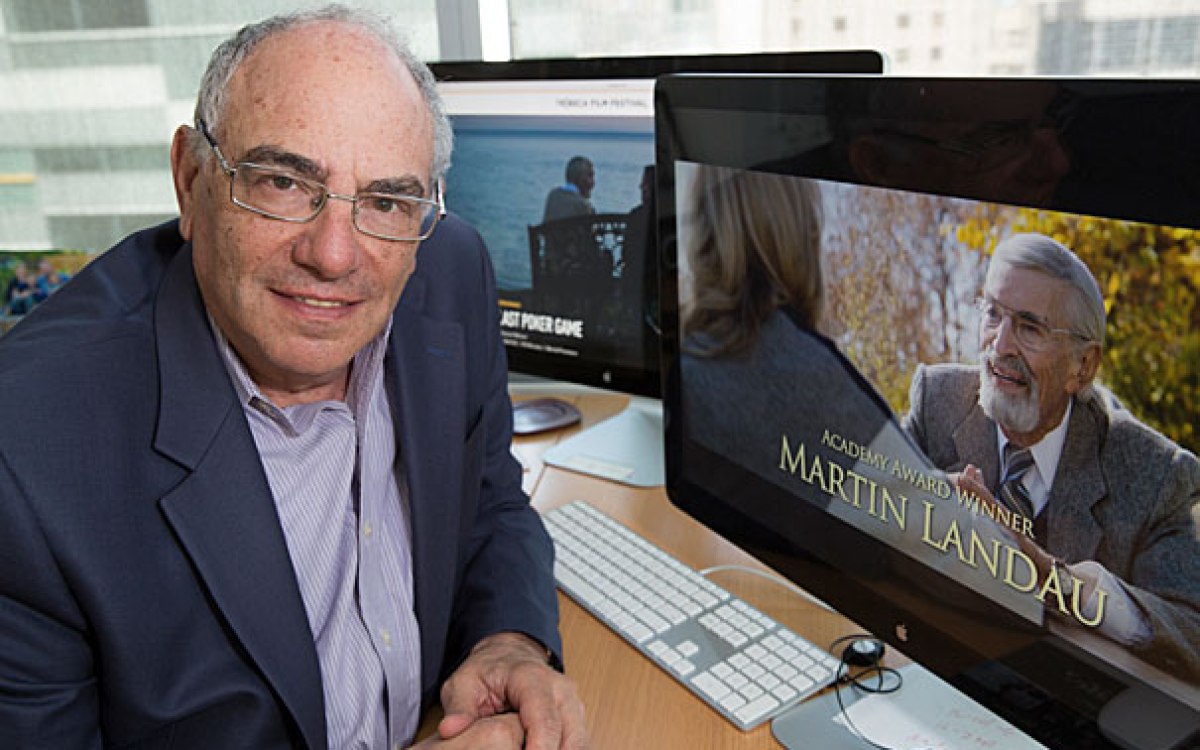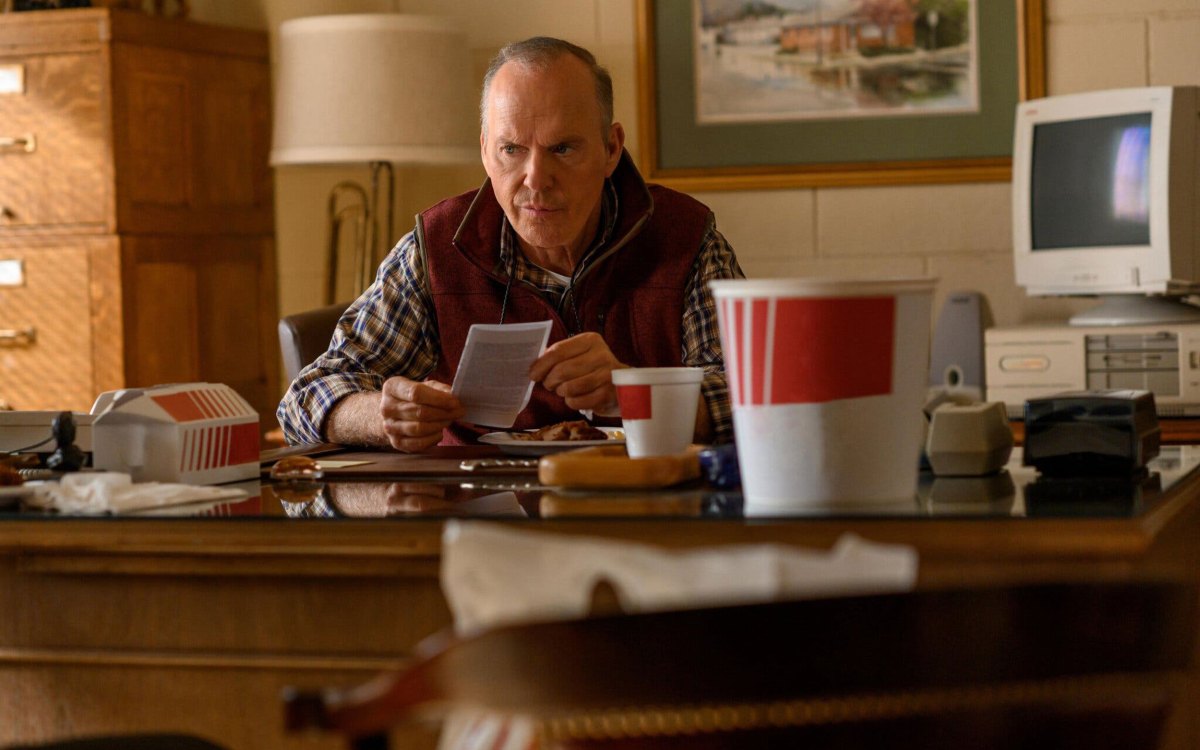
Physician-writers David Foster (“ER,” “SVU,” “Designated Survivor”), left, and Neal Baer (“House,” “New Amsterdam”) discuss storytelling and social change.
Photo by Ann Hermes
Can ‘Law & Order: Special Victims Unit’ make difference in public policy, health?
Two physician-writers discuss their stints on TV series, media’s hidden power to educate
Detective Olivia Benson discovers that police departments across the U.S. are hoarding hundreds of thousands of untested rape kits in a 2010 episode of “Law & Order: Special Victims Unit.” “It’s like we’re telling them that they don’t matter,” Benson says, referring to the victims. And while that episode, called “Behave,” may have been fictional, those numbers were very real.
“Did we have an impact over time? Well, I think so,” said Neal Baer, a graduate of Harvard Medical School, lecturer on global health and social medicine, a co-director of the Master of Science in Media, Medicine, and Health program at Harvard Medical School, and the writer of that episode.
Baer was among the first physicians to become a full-time TV writer. He was part of the original writing staff on “ER,” which first aired in 1994 (and later worked for “SVU” and “Designated Survivor”). Last week, Baer and fellow Harvard Medical School graduate and writer David Foster (“House,” “New Amsterdam”), took part in an event called “Telling Medical Stories on TV: Two Physician-Writers in Conversation,” as part of the Media, Medicine, and Health lecture series. The two discussed how they find inspiration and whether their fictional stories — which have addressed cervical cancer, gun violence, abortion, child psychopaths, COVID-19, and transgender healthcare — can have a measurable, real-world impact.
“When we think about medical stories,” Baer said, “what me and David think about, it’s not about education or entertainment, it’s really about the story.”
But a good story can also entertain and educate — and affect change. After “Behave” aired, Baer said, a media flurry forced states to reckon with their massive backlog of untested rape kits. Since then, 10 states have cleared their backlog; seven enacted legislation to reform how they handle rape kits.
“ER” was “the first TV show to assess whether a story could make a difference. The treatment was the episode.”
Neal Baer, on viewer survey before and after HPV episode
“Behave” may have influenced states to take action. But, back in his “ER” days, Baer wanted to measure whether TV shows can make a difference with individuals. In 2000, few people understood the connection between cervical cancer and the sexually transmitted virus HPV, human papillomavirus. So, Baer wrote an episode in which a sexually active teenage girl unknowingly contracts the virus and gets cervical cancer. Baer, working with the Kaiser Family Foundation, surveyed viewers before and after the episode to learn whether their knowledge of HPV increased.
“We were the first TV show to assess whether a story could make a difference,” Baer said. “The treatment was the episode.”
And the treatment worked, at least temporarily. Before the episode, only 19 percent of viewers knew HPV was associated with cervical cancer. That number rose to 60 percent one week after the episode aired but dropped to 38 percent six weeks after — a big boost, nonetheless.
TV stories like these are effective, Baer and Foster said, because they turn statistics into more powerful visuals, like towering stacks of untested rape kits, a teenage girl’s tears, or a plastic straw embedded deep in a sea turtle’s nostril. Numbers alone don’t work, Baer said. Saying that 34 billion plastic soda bottles are dumped in the ocean each year is nowhere near as powerful as a video of a bleeding, crying turtle — that single video helped push several states to ban plastic straws, according to Baer.
“How do we translate that broad message into an individual, something that’s memorable, something that carries with it the emotion of an individual’s life?” asked Foster, an executive producer of “New Amsterdam.”
The answer? Emotion and specificity, Foster said. “Two hundred and fifty people dying is a news story; one person dying is a tragedy.” Big numbers can cause psychic numbing, but one person’s tragic tale can leave a lasting impression, especially if that person is a character viewers care about.
“Two hundred and fifty people dying is a news story; one person dying is a tragedy.”
David Foster
In 2020, the COVID-19 pandemic halted production on the set of “New Amsterdam,” a show about a public hospital in New York City. When production resumed, Foster wrote a short episode — a kind of tribute, he said — in which the doctors transition from the early, uncertain days of the pandemic to the hope that came with vaccines.
The episode uses almost no dialogue; instead, viewers watch as a patient on a respirator reaches out to an iPad where her family members appear on screen; people in heavy personal protective equipment add another body to a full tractor trailer; a doctor sleeps in the hospital, unable to go home to see his child; and medical staffers applaud when a patient finally goes home and, later, when each gets a first dose of the vaccine.
The hope, Foster said, is that people can relate these stories to their own lives. Of course, the downside of specificity is that you can’t always tell the full range of stories, and both writers have received complaints from viewers with differing experiences of, say, contracting hepatitis C (in an episode Foster wrote, a patient contracts the virus from a prison tattoo).
But both doctors are adamant about getting one thing into every story they tell. “We would bring in the science,” Baer said, “always trying our best to bring in the science.” Previously, he continued, “doctors would come in and sprinkle medicine on top of the story.”
Now, the stories start with the medicine.








